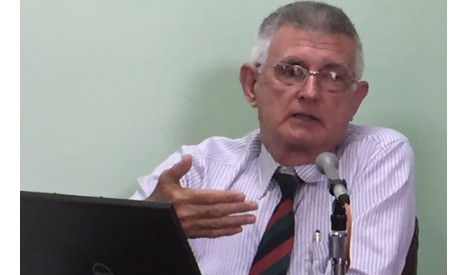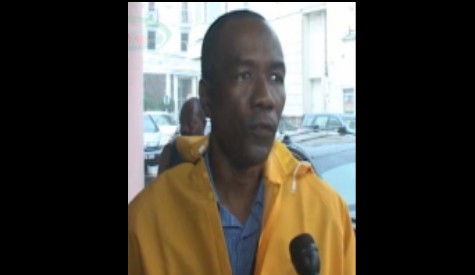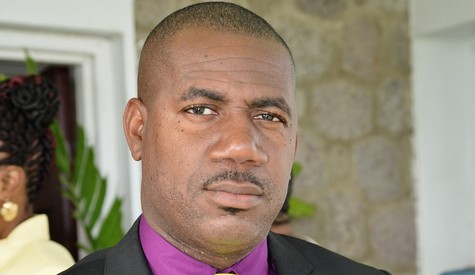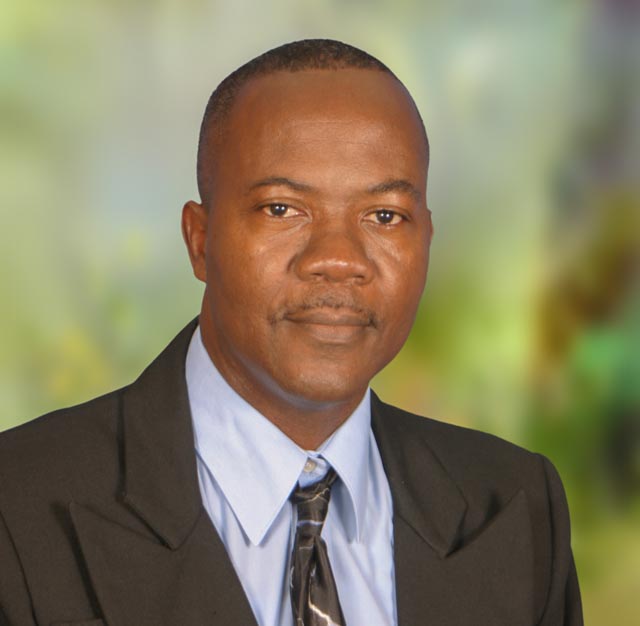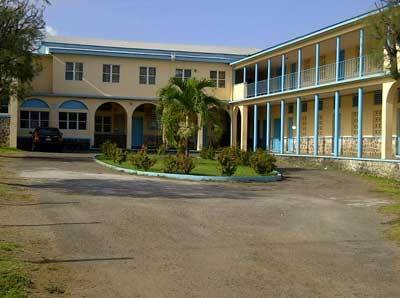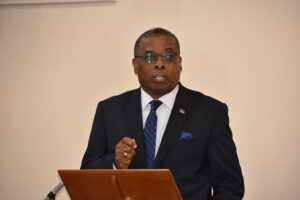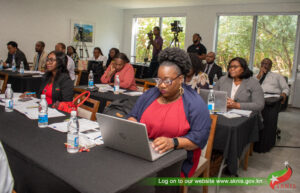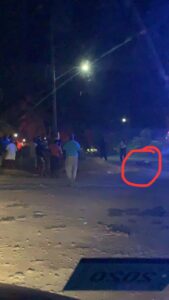Published 24 July 2017
Buckie Got It, St. Kitts and Nevis News
Glenroy Blanchette warns building new BHS on aquifer will risk valuable water source, cause flooding
BASSETERRE, ST. KITTS, JULY 24TH 2017 – East Basseterre resident, Mr. Glenroy Blanchette said Monday he is troubled by the decision of the Timothy Harris-led Team Unity Government to build a new Basseterre High School (BHS) on the Basseterre Valley Aquifer.
“The risks to life and property are too great. This is the right time for the government to adopt the precautionary principle and do not build on the Aquifer. To do otherwise will create untold hardship for present and future generations. A word to the wise is enough,” warned Blanchette, a lecturer at the Clarence Fitzroy Bryant College (CFBC).
In a two-page statement with video, Blanchette, a trained geographer and Disaster Management Specialist for 15 years “to think that this government is going to be so recklessly criminal by putting such a valuable water resource at risk, is really mind-boggling.”
He noted that in 2011, the Douglas administration designated the Basseterre Valley Aquifer area a national park in order to protect the Aquifer and well field.
“Six years later, this new administration is ignoring sound scientific advice about contamination threats to the aquifer and is moving ahead with plans to build a school there,” said Mr. Blanchette, who noted that he has heard Minister of Education, Hon. Shawn Richards during the recent press conference say that the decision to build was made after Cabinet received advice from an expert panel group.
“Utter nonsense. That’s not how it’s supposed to work! Our Development and Control Planning Act of 2000 stipulates that the Planning Board must play an integral role in any development proposal. Was the Planning Board involved in the process? And if the Planning Board was involved, why wasn’t the public consulted? Why, according to the Act, a copy of the draft development plan has not been submitted to the public for scrutiny? Why has the government decided to build before getting advice from an independent Environmental Impact Assessment? These are questions that the government must answer,’ said Blanchette.
He further noted that the Director of Public Works, Mr. Cromwell Williams has said that the new Basseterre High School site is safe in part because the site is downstream of the wells and the water in the area moves from north to south.
Andrew Hutchinson, a chartered engineer, a senior principal of Stantec Consulting Caribbean Ltd, a civil engineering company based in Barbados was also at the press conference.
“You were also told by an engineer from Barbados that the school will not impact the aquifer. When that engineer collects his millions of dollars and leave, we here have to face the problem, not him,” said Blanchette.
He pointed out that as a trained geographer and Disaster Management Specialist for over 15 years, “I am aware that groundwater withdrawals can interrupt flow paths. As the water level drops, flow paths can reverse direction. The static water levels in the Basseterre Valley Aquifer have been declining over the years. There is already evidence of salt water intrusion in the Aquifer. This means that water has been moving in the opposite direction.”
“What is also interesting is the fact that a few years ago, the Director raised concerns about the increased pollution threat from construction activities in the area. The construction of a new BHS in that area will only make the situation worse!” Blanchette stated.
He noted that as a result of mounting public pressure, Minister of Infrastructure, Hon. Ian “Patches” Liburd has been forced to say that plans are being discussed to move the wells further upstream because of saltwater intrusion.
“But wait! I smell a foul scent here! You mean to tell me that the Minister is concerned about saltwater intrusion but he doesn’t care one damn about the aquifer being contaminated by 20,000 gallons of stinking sewage being produced in the area each day,” asked Mr. Blanchette.
Mr. Blanchette noted further that the engineer recommended that the sewage be discharged into a deep injection well into the sea.
“More madness. He ought to know that in the US, deep injection wells have leaked dangerous chemicals into aquifers, so much so that the US Army Corps of Engineers said that injection wells will not be considered in the near future to store storm water. Furthermore, there is serious concern among scientists that deep injection wells can trigger earthquakes. We know, in recent past, we have been experiencing several tremors,” Mr. Blanchette pointed out.
He noted with concern that scientists in the Caribbean and elsewhere have predicted that if the Kick ‘em Jenny underwater volcano off the coast of Grenada erupts, residents of St. Kitts have about 30 minutes to reach a safe zone.
The National Emergency Management Agency (NEMA) recently published an island-wide tsunamis evacuation map to assist residents of Basseterre, particularly those in low-lying areas, to escape the wrath of tsunamis.
“Based on that map, students at the original Basseterre High School will have to travel about a half a mile to get to the nearest safe zone, whereas students at the new site will have to travel one and a half miles to get to that safe zone. What madness is this? Why are they exposing our children to greater risks?” he asked.
He said the issue is very serious and the cost of the new BHS to the country will be tremendous.
“First we were told EC$10 million. Now we are hearing $40 million. Soon we will hear over $100 million. For what? When you can save all that money by going back to the historic, beautiful and spacious Basseterre High School which scientists have declared is safe to occupy once a few remedial measures have been done,” Blanchette said.
He added that the construction of a new BHS on the Basseterre Valley Aquifer will increase the risk of flooding in Basseterre.
“The project will increase the area of impermeable surface and contribute to greater surface run-off of rainfall and create additional flooding nightmares for the people of Newtown and surrounding areas. Let us not forget the disastrous flood of 1880 when 231 residents of Basseterre lost their lives. Only 116 bodies were recovered; many washed out to sea. 17 bodies washed ashore as far as Statia. Dead bodies covered in mud in Pall Mall Square. Can this happen again? Sure, if we make the same mistakes of the past.”
Photo 1- Mr. Glenroy Blanchette
Photo 2 – Hon. Shawn Richards
Photo 3 – Hon. Ian Liburd
Photo 4 – Mr. Cromwell Williams
Photo 5 – Mr. Andrew Hutchinson
Photo 6 – Western Campus of the original BHS


